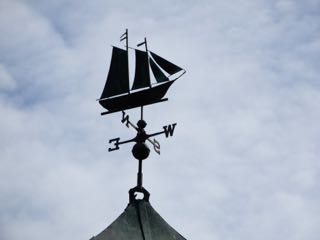
-
| 
-
| 
-
|
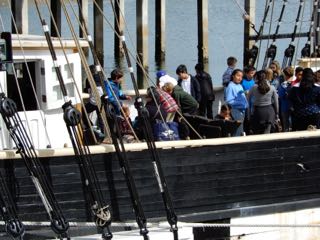
-
| 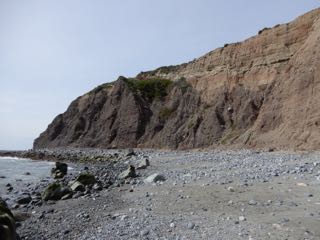
-
| 
-
|
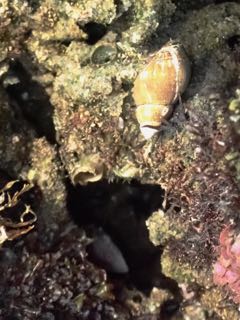
Macron lividus is a modest snail, without the benefit of large size, frills,
wings, or bright colors, and almost nothing is known about its predatory life style, but it is California's only representative of the
neogastropod (Olivoidea) family, Pseudolividae, so is of interest to those who study molluscan relationships. This family
has been studied by the well known expert on snails and Univ. of California Davis Professor, Geerat Vermeij. Dr. Vermeij
proposed that this is a relictual family that has
been declining in tropical global diversity since the Paleocene Epoch (66-56 MYBP).
Source: Vermeij 1998a; 1998b (Geobios 30(7): 997-1002).
| 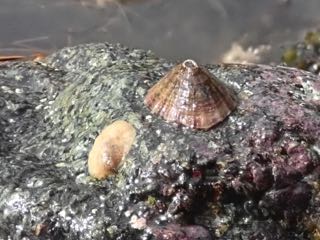
Volcano keyhole limpet, Fissurella volcano, and a suspension-feeding slipper
limpet, tentatively Crepidula onyx, with some colonial animals, bryozoans, on its shell.
| 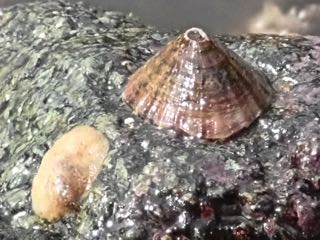
-
|
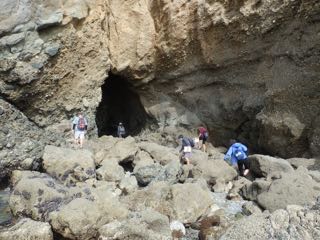
-
| 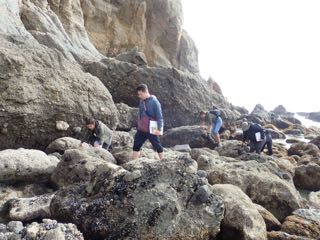
-
| 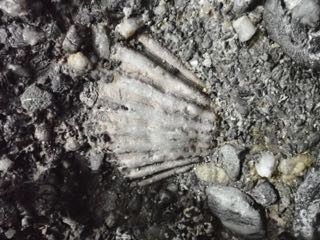
fossil scallop
|

-
| 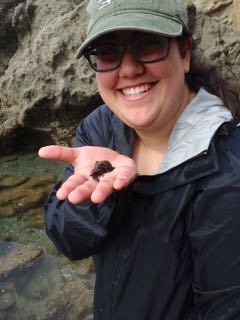
juvenile brown sea hare
| 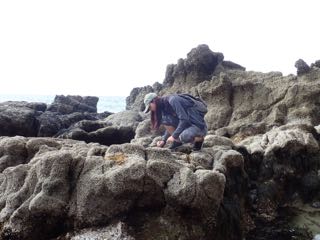
-
|
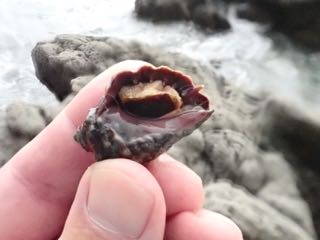
Mexacanthina lugabris is a southern species that seems to continue to
increase in abundance in Orange County.
| 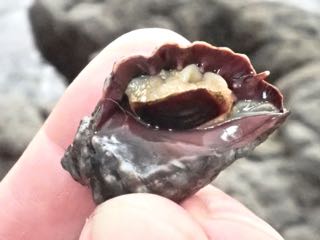
-
| 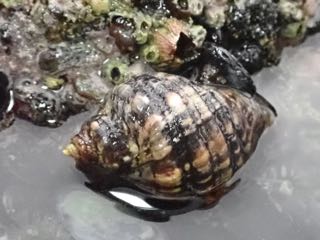
-
|
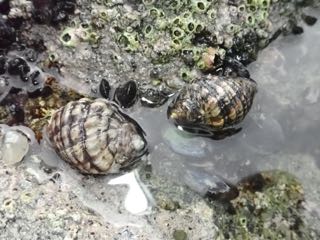
-
| 
-
| 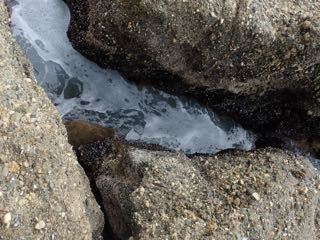
-
|
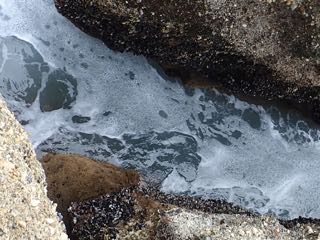
-
| 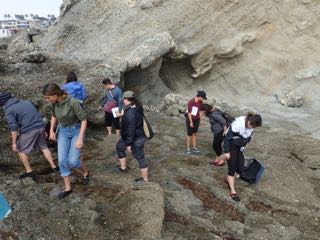
-
| 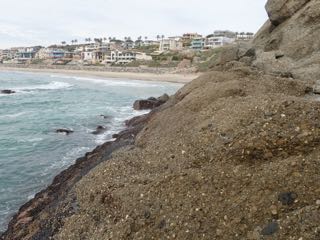
-
|
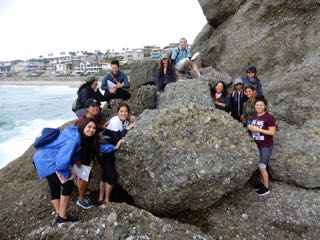
-
| 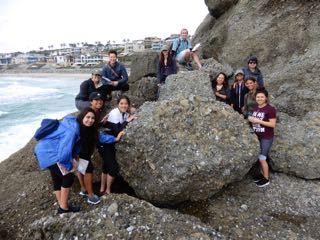
-
| 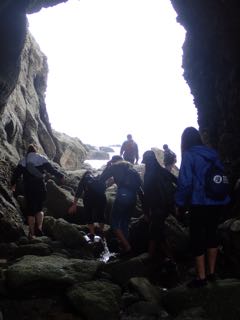
-
|
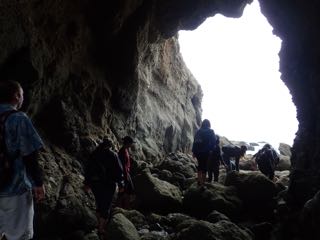
-
| 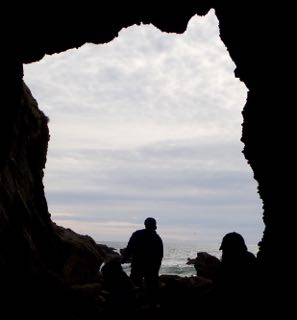
-
| 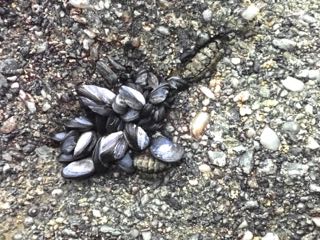
Nuttallina fluxa (southern spiny chiton) was dominant on the rugose surfaces
in the mid-zone of the intertidal, with some Mytilus californianus (California mussel) here.
|
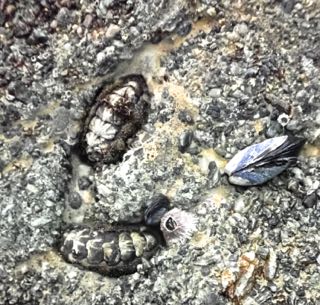
-
| 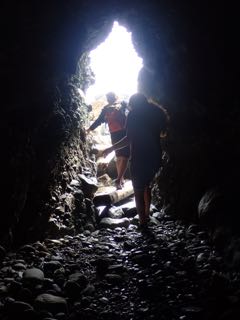
-
| 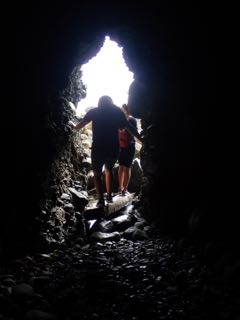
-
|
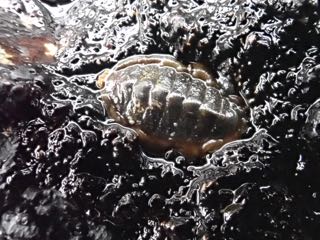
Cyanoplax hartwegii (Hartweg's chiton) is common under the
rockweed, Silvetia compressa.
| 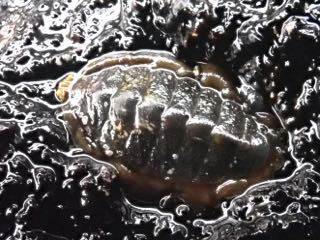
-
| 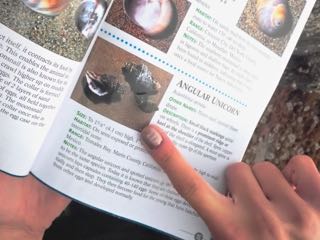
-
|
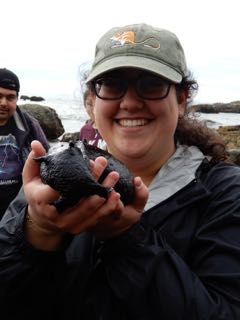
-
| 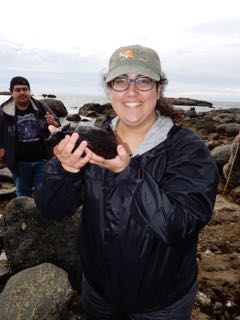
-
| 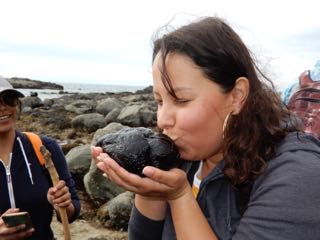
-
|
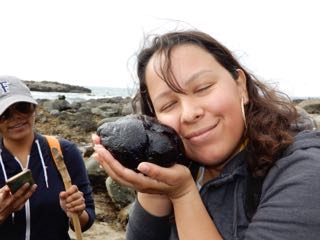
black sea hare, Aplysia vaccaria
| 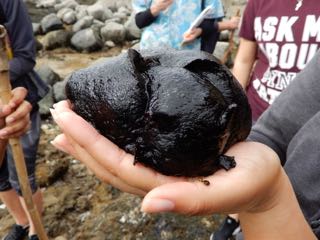
-
| 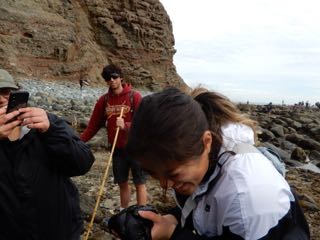
-
|
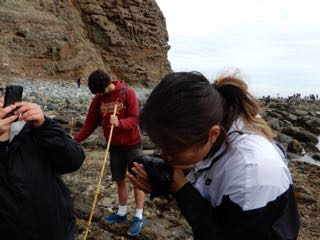
-
| 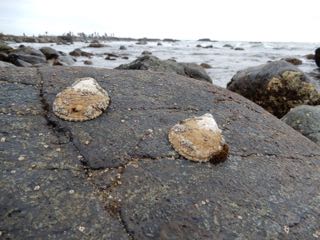
These two similar-size large, probably female, owl limpets (Lottia
gigantea) are apparently on adjacent territories but without any obvious boundary region. Owl limpets start as smaller males
and change to females when larger size helps them actively defend a farmed territory of microscopic algae.
| 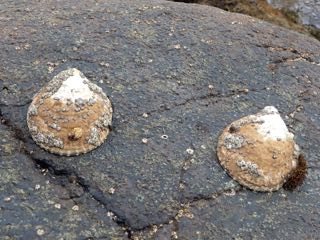
-
|
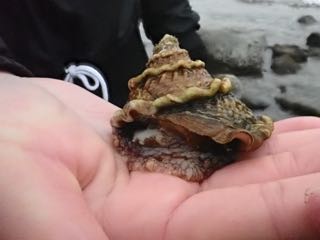
Wavy turban snails (Megastraea undusa), like this still small
individual, are generalist herbivores whose diet consists of whatever is available. Where it was studied on the Baja California Peninsula,
it was found to prefer a variety of kelps,
especially giant kelp, but will also eat lower quality food items, including coralline algae, surfgrass, and hydrozoans.
- Source:
Alejandra MazariegosVillarreal et al. 2017
| 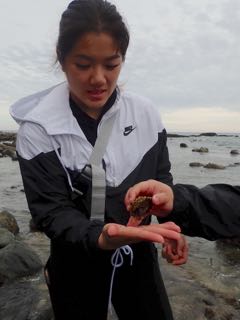
-
| 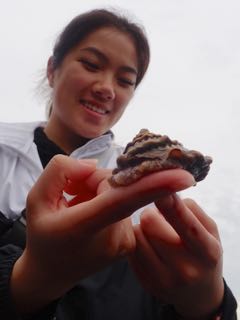
-
|
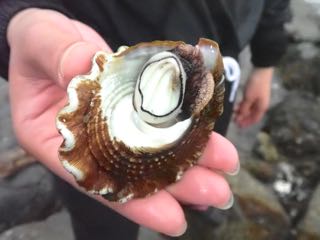
-
| 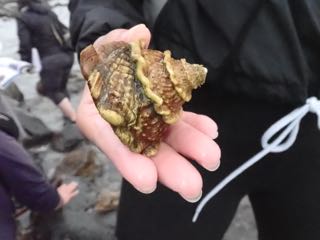
-
| 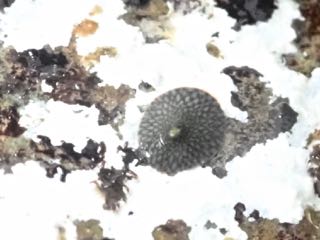
Characteristic fenestrated pattern of a still very small and uneroded
Lottia fenestrata. In Latin, fenestra means window, and its name for this limpet refers to the many window-like lighter
spots on its shell. I am unaware of any studies of light reception in this species, but there is reason to expect that these
small windows might be functional. While he was a student at San Francisco State University,
before I got to know him as a fellow graduate student at UC Santa Cruz, limpet-expert Dr. David Lindberg and his co-authors
published a study presenting evidence that limpets of a closely-related more-northern species,
Lottia persona, can sense and respond to light that comes through similar windows in their shell. They feed mostly
at night and retreat to dark places as dawn approaches.
Source -
Lindberg, D.R., M.G. Kellogg, and W.E. Hughes. 1975. Veliger 17(4): 383-386 and figs. 1a-1b.
|
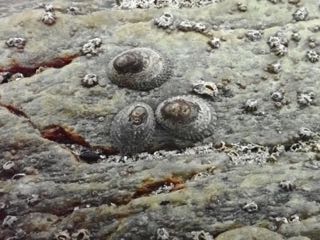
We have studies underway to show that this common
southern California limpet, Lottia sp. B, is a more northern relative if the tropical Lottia strigatella.
| 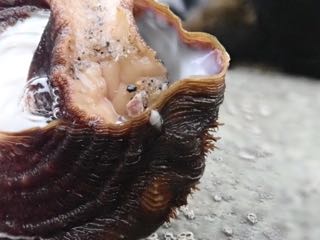
-
| 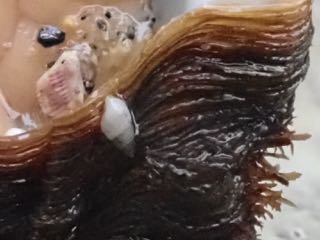
-
|
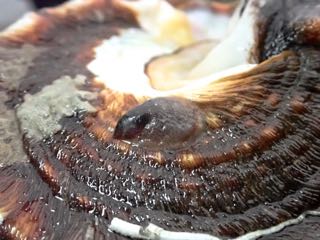
-
| 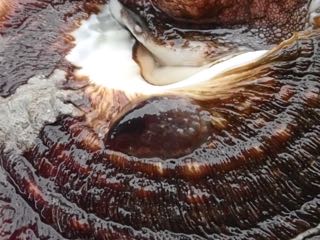
An onyx slipper snail (Crepidula onyx) on a wavy turban snail (Megastraea undosa)
| 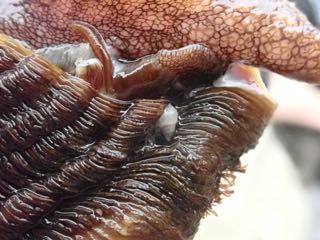
-
|
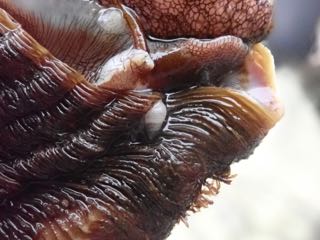
-
| 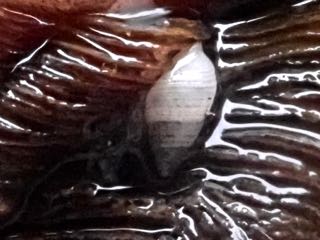
An ectoparasitic snail, identified as probably Chrysallida cincta by Pyramidellidae expert,
Patrick LaFollette.
This species is often found on a variety of turbinid snails, such as this wavy turban snail (Megastraea undosa).
| 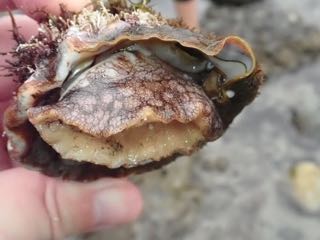
-
|

-
| 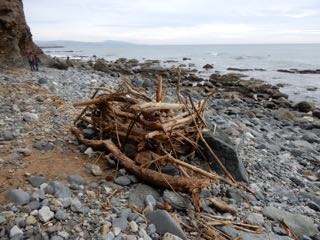
-
| 
-
|
 Under Construction!
Under Construction! Under Construction!
Under Construction!